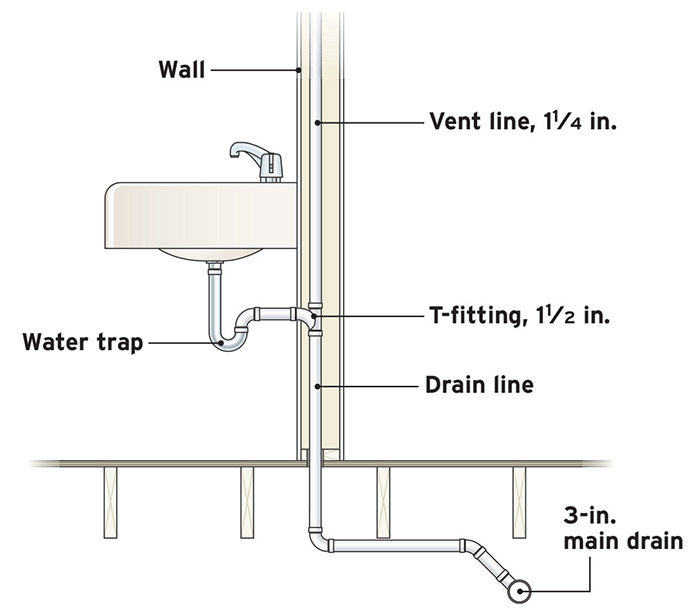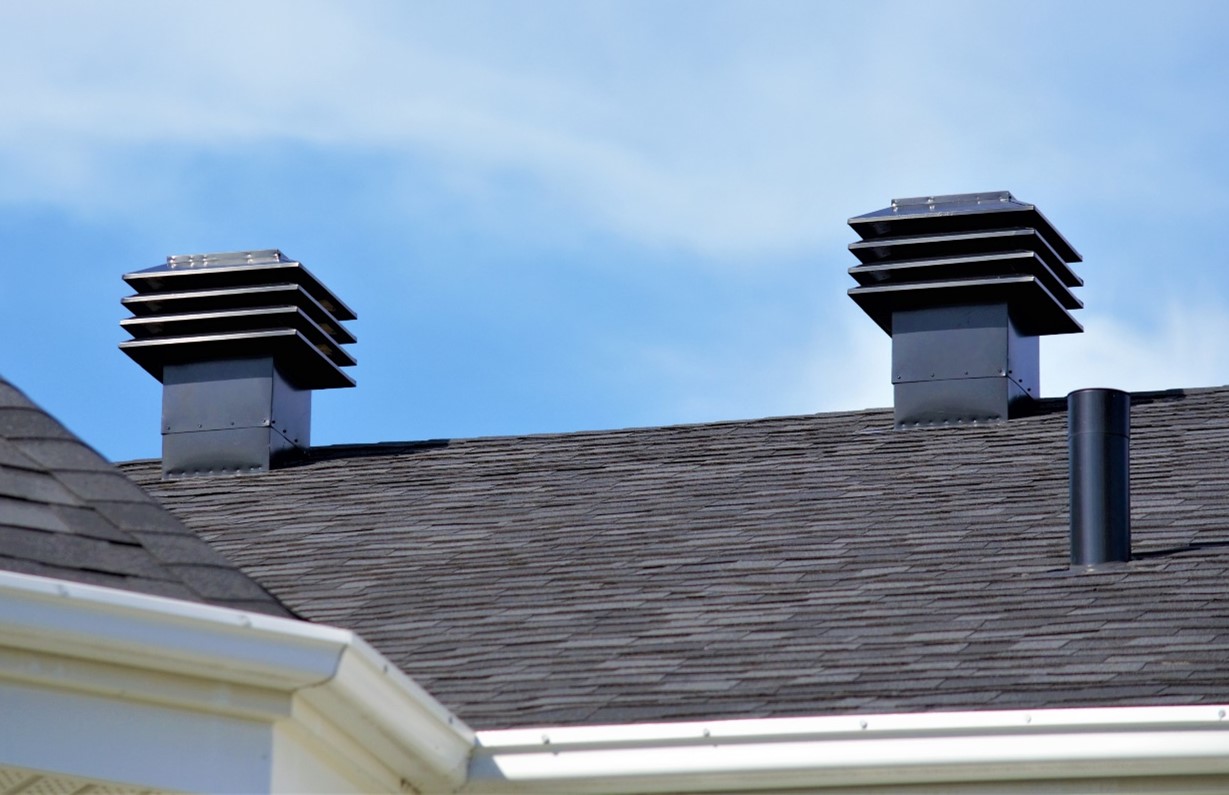The Benefits of Correct Ventilation in Your Plumbing System
The Benefits of Correct Ventilation in Your Plumbing System
Blog Article
Everybody is bound to have their personal perception about The Upsides of Proper Ventilation in Plumbing Design.

Proper ventilation in plumbing systems is typically ignored, yet it is vital for preserving the performance and safety of your home's pipes. Air flow helps regulate atmospheric pressure, stop the buildup of unsafe gases, and make certain the efficient removal of waste. In this overview, we will discover the importance of correct pipes air flow, how it works, and the advantages it brings to your pipes system.
Understanding Ventilation in Pipes
Ventilation in pipes describes the network of pipelines that enable air to flow with the water drainage system. These vents offer numerous functions, including controling air pressure within the pipes, stopping sewer gases from entering the home, and helping in the smooth circulation of wastewater.
Just How Air Flow Functions in Plumbing Solutions
Air Pressure Policy
Appropriate ventilation preserves balanced atmospheric pressure within the plumbing system. When water flows via pipelines, it displaces air. Without ample air flow, this displacement can develop negative pressure, bring about slow down drains or siphoning of water from traps, which can cause unpleasant odors to leak right into the home.
Protecting Against Sewage System Gas Build-up
Among the most crucial functions of pipes vents is to avoid sewage system gases, such as methane and hydrogen sulfide, from building up within the home. These gases can present significant health and wellness risks and are very flammable. Vent pipes permit these gases to run away safely outdoors.
Helping in Waste Removal
Ventilation helps in the efficient elimination of wastewater by stopping airlocks in the drain system. When air can move openly with the vents, it allows water and waste to stream efficiently via the pipes, minimizing the danger of blockages and backups.
Types of Pipes Vents
Main Stack Vent
The major stack vent, additionally referred to as the vent pile, is the primary air vent in a pipes system. It extends from the major drain align through the roof, enabling gases to escape and fresh air to go into the system.
Branch Vent
Branch vents connect to the primary pile vent and serve specific fixtures, such as sinks, toilets, and showers. These vents make certain that each component has ample ventilation to operate appropriately.
Air Admittance Shutoff (AAV).
An Air Admittance Valve (AAV) is a one-way valve that permits air to get in the pipes system without the demand for a traditional air vent pipe prolonging with the roof. AAVs are typically utilized in restorations or locations where setting up a common air vent is unwise.
Indications of Poor Ventilation in Plumbing.
Slow Draining Fixtures.
If your sinks, bathtubs, or bathrooms are draining gradually, maybe an indication of bad ventilation. Poor air circulation can produce a vacuum result, making it challenging for water to drain pipes appropriately.
Gurgling Sounds.
Gurgling noises coming from drains are commonly an outcome of air being drawn through water catches as a result of adverse pressure in the pipelines. This is a clear indicator of insufficient air flow.
Unpleasant Smells.
Sewer smells inside your home are a warning that your plumbing system is not properly aerated. This could imply that sewer gases are not being sufficiently vented outside, leading to potentially unsafe problems.
Usual Air Flow Mistakes.
Inadequate Vent Sizing.
Utilizing undersized air vent pipelines can result in poor air flow and stress imbalances in the system. It's vital to use vents that satisfy the certain demands of your pipes system.
Improper Vent Positioning.
Positioning vents also far from the components they offer can reduce their effectiveness. Appropriate placement makes sure that air can move easily and effectively with the system.
Ignoring Code Demands.
Building regulations provide particular guidelines for plumbing ventilation. Ignoring these codes can cause a system that falls short to work properly and might lead to expensive repairs or carcinogen.
Benefits of Proper Air Flow.
Boosted System Performance.
Appropriately aerated pipes systems operate extra successfully, with fewer clogs, faster draining, and less stress on the pipelines. This performance extends the life expectancy of the plumbing system.
Improved Air Quality.
By stopping drain gases from entering your home, proper air flow contributes to better indoor air quality, making your living atmosphere healthier and a lot more comfortable.
Protecting Against Water Damage.
Appropriate ventilation helps protect against water from being siphoned out of traps, which can lead to sewer gases entering the home and triggering water damage gradually.
Actions to Ensure Appropriate Air Flow.
Consulting Plumbing Codes.
Constantly get in touch with neighborhood plumbing codes when designing or modifying your pipes system. These codes offer the essential guidelines for appropriate airing vent and ensure your system fulfills safety and security requirements.
Regular Examination and Maintenance.
Routine examinations can aid determine potential ventilation concerns before they become significant troubles. Maintenance jobs, such as cleansing air vent pipelines and looking for obstructions, are vital for maintaining the system in good working order.
Specialist Installation.
For new installments or significant adjustments, it's a good idea to work with a specialist plumbing technician. They have the knowledge to make sure the air flow system is properly developed and mounted according to code.
Verdict.
Correct air flow is a critical component of any kind of plumbing system, making certain that it works efficiently and securely. By recognizing the value of air flow, identifying the indicators of bad ventilation, and taking actions to preserve your system, you can avoid pricey problems and safeguard your home's air high quality.
4 Things You Should Know About Your Plumbing Vents
What Plumbing Vents Are
Also called a vent stack, a plumbing vent is a vertical pipe attached to your drain line that runs through your roof. The plumbing vent pipe, or plumbing air vent, removes gas and odors from your plumbing system and allows fresh air to enter the pipes, helping the water to flow out of the drain pipes.
What Plumbing Vents Do
Plumbing vents have two basic functions. One of which is to allow unpleasant smelling wastewater and sewer gasses to escape your plumbing system instead of entering your home. Plumbing vent pipes are typically located on roofs, away from windows, to ensure the fumes exit the home completely.
The other function of the plumbing vent is to move fresh air into your plumbing system. This helps move water through every plumbing fixture in your house, like toilets and sink drains. Think of the way in which you need to let a little air into the bottle as you pour soda in order to make the drink flow smoothly.
Different Types of Plumbing Vents
True vent: This is the most common vent option. In simplest terms, a true vent is a vertical pipe attached to your drain line that exits through the roof. They often function as the main vent that other fixtures can connect to. Re-vent pipe or auxiliary vent: Attached to the drain line near specific plumbing fixtures, re-vent pipes run up and over to connect to the main vent. Common vent: Two plumbing fixtures installed on opposite sides of a wall are typically tied into the vent stack using something known as a sanitary cross. Wet vent: This venting option operates as a drain pipe and a vent at the same time. Wet vent drainage systems drain water from one fixture while venting the air from another. Although they’ve been used for over 100 years, wet vent systems have only recently been added to the plumbing code in many areas. If you’re planning on installing one in a bathroom remodel, make sure you check your local code prior to construction. Loop vent: For free-standing fixtures like kitchen island sinks, loop vents are ideal. These vent pipes run under the floor, rise from the P-trap, and create a loop inside the cabinet sink. Air admittance valve: An AAV is a one-way mechanical valve typically installed at the site of the plumbing fixture. AAVs allow venting to occur without having to tie into a larger venting system. They’re ideal for venting fixtures where you aren’t able to easily connect to an existing vent system. Common Plumbing Vent Issues
Although vent pipes typically don’t have water flowing through them, they’re still subject to many typical plumbing issues. For example, clogs are one of the most common problems associated with sewer vent pipes. If your vent pipe gets clogged, all of your plumbing fixtures tied into the vent stack will be affected.
A sink with a slow drain that bubbles and gurgles or a strong sewage smell around your toilet are both indicators that your toilet vent pipe is clogged. Because most vent pipes exit through the roof, old leaves, twigs or even a bird’s nest could be clogging the pipe.
Clogs in your vent pipe system cause a buildup of negative pressure, meaning that water won’t be able to flow out of your home very well. It’s similar to putting your finger over the opening of a straw to trap water inside. When you remove your finger, the water is able to flow out of the straw.
If you suspect you have any blockage in your vent, make sure you have a professional come examine the situation. Left unchecked, a blocked air vent can lead to other costly repairs, like leaks and sediment buildup.
Under Pressure
Pipe vents are essential aspects of a home’s plumbing system. Owning a home means learning about all sorts of things you never put much thought into before. But by understanding as much as you can about the important systems of your home, you can keep those budgets intact and those anxiety levels low.
https://www.homeserve.com/en-us/blog/home-improvement/plumbing-vents/

As a fervent reader on Why Plumbing Air Vents Are Important, I imagined sharing that piece of content was sensible. Appreciated our write up? Please share it. Help someone else check it out. Thank you so much for your time invested reading it.
Book A Service Report this page